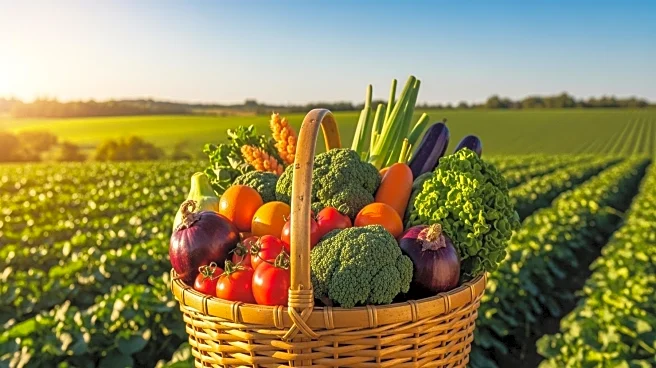What's Happening?
American farmers are facing significant challenges due to the Trump Administration's tariff policies and ongoing trade conflicts, which have adversely affected commodity exports. The current harvest season is marked by a lack of market demand for crops, which were initially expected to perform well. This situation has led to discussions about the effectiveness of farm subsidy payments, which have historically been decoupled from production decisions and market prices. The article highlights the historical context of farm policies and the impact of government payments on land and input costs. It suggests that the current approach of issuing payments may not address the fundamental supply and demand issues faced by farmers, and could potentially exacerbate existing problems by increasing costs and reinforcing competitive advantages for larger farms.
Why It's Important?
The broader significance of this development lies in its potential impact on the agricultural sector and the economy. The tariff policies and trade conflicts have damaged export markets, which could lead to long-term consequences for American farmers. The reliance on government payments as a solution may not be sustainable, as these payments can become capitalized into land values and input costs, further increasing financial pressures on farmers. This situation could lead to increased bankruptcies and foreclosures, particularly affecting early-stage farmers and those adopting conservation practices. The article suggests that policy responses should focus on enabling timely adaptations and innovations rather than perpetuating high costs through payments.
What's Next?
The foreseeable consequences include potential adjustments in farm policies to better address the supply and demand imbalances. There may be discussions on alternative solutions to payments, such as conservation programs or policies that encourage innovation and adaptation. Stakeholders, including policymakers and agricultural organizations, may need to consider the long-term impacts of current policies and explore options that support sustainable farming practices. The expiration of the Conservation Reserve Program and the need for reauthorization could also play a critical role in shaping future agricultural policies.
Beyond the Headlines
The deeper implications of this situation involve ethical and economic considerations regarding the role of government in supporting farmers. The historical context provided in the article highlights the challenges of balancing supply-side and demand-side policies, and the potential for unintended consequences when payments are used as a primary solution. The article suggests that a more holistic approach to farm policy, incorporating conservation and innovation, could lead to more sustainable outcomes for the agricultural sector.










